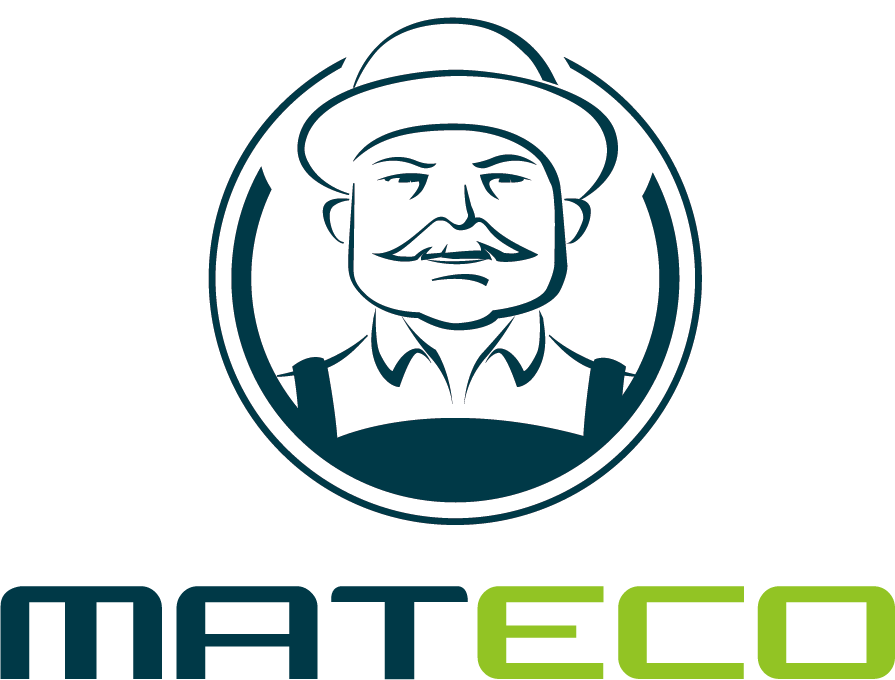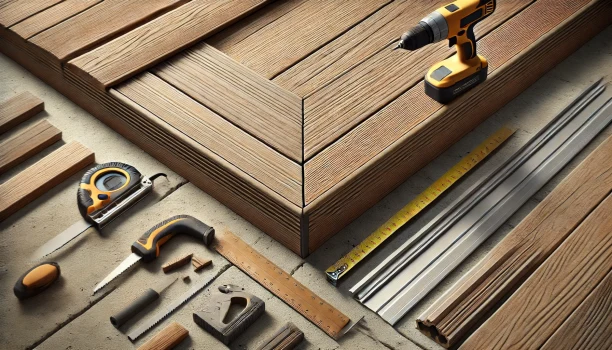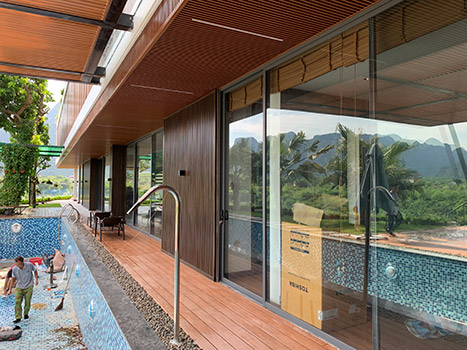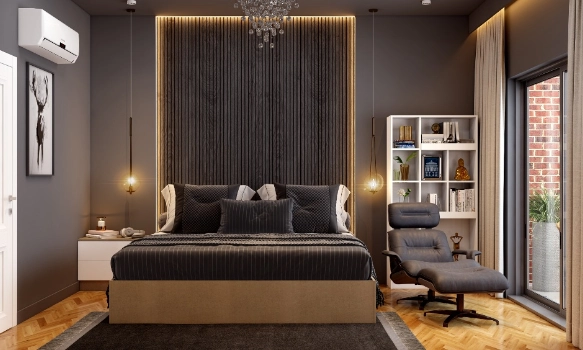What Material is Best for Kitchen Walls?
Choosing the right material for your kitchen walls is crucial for both aesthetics and functionality. The kitchen is a high-traffic area that deals with heat, moisture, and daily wear and tear, making it essential to select a durable, easy-to-clean, and attractive material. In this article, we'll explore various materials, including the increasingly popular Wood-Plastic Composite (WPC), and compare their benefits and drawbacks.
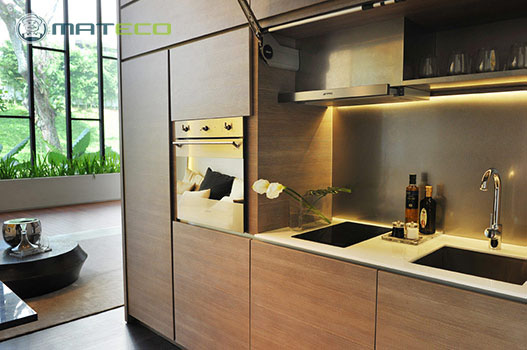
1. Wood-Plastic Composite (WPC)
What is WPC?
Wood-Plastic Composite (WPC) is an innovative material made from a blend of wood fibers and plastic polymers. This combination creates a durable, moisture-resistant product that mimics the appearance of natural wood while offering superior longevity and ease of maintenance.
Advantages of WPC:
Fire Resistance: Many WPC materials have fire-resistant properties, effectively reducing the risk of kitchen fires.
Water Resistance: WPC materials offer excellent water resistance and do not swell, warp, or rot in the humid kitchen environment.
Stain Resistance: The smooth surface of WPC panels makes them easy to clean, preventing grease, water stains, and other contaminants from penetrating the material, making daily maintenance convenient.
Aesthetic Versatility: WPC panels can mimic various wood textures and colors, offering multiple design options to enhance kitchen decor.
Ease of Installation: WPC panels often feature modular designs, making them easy to install and saving on renovation time and costs.
Disadvantages of WPC:
Cost: WPC can be more expensive than traditional materials like tiles or paint.
2. Ceramic Tiles
What are Ceramic Tiles?
Ceramic tiles are a traditional and popular choice for kitchen walls. Made from natural clay and fired at high temperatures, these tiles are known for their hardness and durability.
Advantages of Ceramic Tiles:
Durability: Highly resistant to heat, moisture, and scratches.
Variety: Available in countless colors, patterns, and sizes.
Easy to Clean: Smooth surfaces make cleaning spills and splashes simple.
Disadvantages of Ceramic Tiles:
Installation: Can be labor-intensive and requires skilled installation.
Grout Maintenance: Grout lines can become stained and require regular cleaning or sealing.
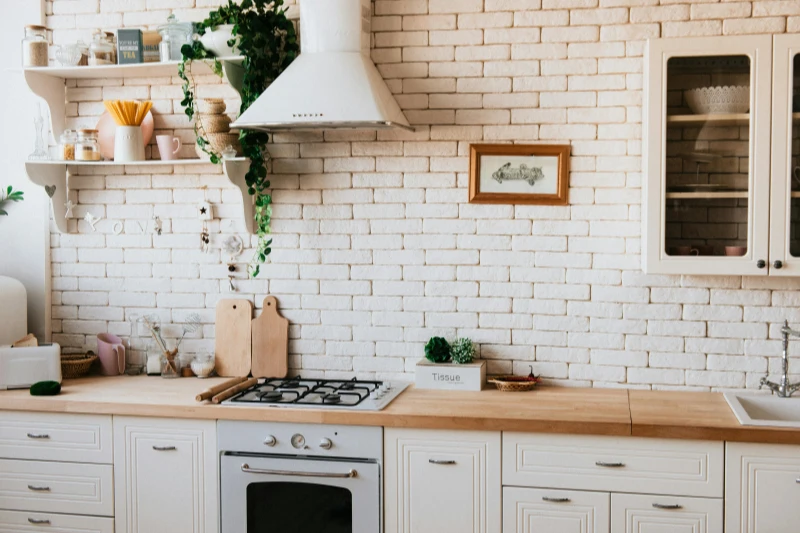
3. Stainless Steel
What is Stainless Steel?
Stainless steel wall panels are often used in commercial kitchens but are becoming increasingly popular in residential settings. They offer a sleek, modern look and are incredibly durable.
Advantages of Stainless Steel:
Heat and Stain Resistant: Perfect for high-temperature areas and easy to wipe clean.
Durability: Long-lasting and resistant to rust and corrosion.
Hygienic: Non-porous surface that resists bacteria and mold.
Disadvantages of Stainless Steel:
Cost: Can be expensive to purchase and install.
Aesthetic: May not suit all kitchen styles, particularly traditional or rustic designs.
4. Glass
What is Glass?
Glass panels or tiles offer a sleek and contemporary look for kitchen walls. They are available in various colors and finishes, including frosted, tinted, and back-painted options.
Advantages of Glass:
Reflective Surface: Enhances natural light and makes kitchens appear larger.
Easy to Clean: Non-porous surface resists stains and is easy to wipe down.
Modern Aesthetic: Provides a clean, modern look that complements contemporary designs.
Disadvantages of Glass:
Fragility: Can be prone to chips and cracks.
Cost: High-quality glass panels can be expensive.
5. Paint
What is Paint?
Paint is a versatile and cost-effective option for kitchen walls. Modern paint formulations are available in moisture-resistant and washable varieties, making them suitable for kitchen environments.
Advantages of Paint:
Cost-Effective: Generally cheaper than other wall materials.
Easy Application: Simple to apply and touch up.
Variety: Endless color options to match any kitchen decor.
Disadvantages of Paint:
Durability: More susceptible to damage from heat, moisture, and daily wear and tear.
Maintenance: Requires regular touch-ups and cleaning to maintain appearance.

Conclusion
Selecting the best material for your kitchen walls depends on your priorities, whether they are durability, maintenance, cost, or aesthetics. WPC stands out as a modern, versatile option that offers excellent durability and low maintenance. However, traditional choices like ceramic tiles, stainless steel, glass, and paint each have unique benefits that may better suit your specific needs and style preferences. Consider the pros and cons of each material to make an informed decision that will enhance both the functionality and beauty of your kitchen.
If you are looking for a WPC manufacturer, MATECO WPC will be your best choice.
Website: https://www.matecowpc.com
WhatsApp: +86-13380085620
Email: info@matecowpc.com
